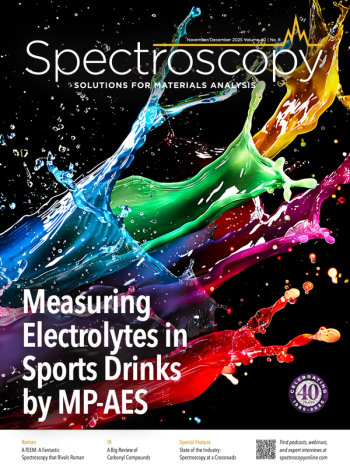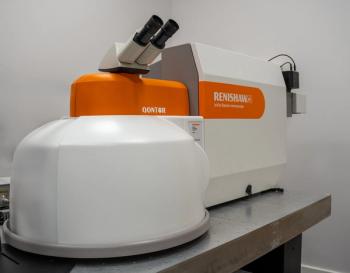Key Points
Lisa Flanagan's team developed a two-step dielectrophoresis (DEP) method to isolate astrocyte-biased human neural stem and progenitor cells (hNSPCs) based on their higher membrane capacitance, enabling label-free sorting under ambient conditions.
This study is the first to leverage electrophysiological properties alone (specifically membrane capacitance) to enrich human astrocyte-biased hNSPCs, a breakthrough that advances cell sorting and has implications for understanding and treating neurological diseases.
The DEP-sorted astrocyte-biased cells can serve as valuable models for studying neurological disorders like ALS and may improve therapeutic strategies involving stem cell transplantation, highlighting a scalable, non-invasive sorting approach for clinical applications.
Lisa Flanagan and fellow researchers at the University of California, Irvine (Irvine, California) conducted a study exploring a method to isolate astrocyte-biased human neural stem and progenitor cells (hNSPCs), which are valuable for treating neurological diseases. These cultures are typically heterogeneous, containing cells with different fates. Astrocyte-biased cells have distinct electrophysiological properties, especially higher membrane capacitance, which the researchers used as a marker for separation via dielectrophoresis (DEP). Flanagan’s team developed a novel two-step DEP sorting technique and device to enrich these cells without labels. This is reportedly the first demonstration of using electrophysiological properties alone to sort and enrich human astrocyte-biased cells, facilitating further research into their biology and therapeutic potential.
Flanagan will receive the 2025 Mid-Career Award from the AES Electrophoresis Society, awarded for exceptional contributions to the field of electrophoresis, microfluidics, and related areas by an individual who is currently in the middle of their career. The award will be presented at SciX 2025, taking place from October 5 to 10 at the Northern Kentucky Convention Center in Covington, Kentucky. Spectroscopy spoke to Flanagan about this study and the paper that resulted from it (1) as part of our continuing interview series with SciX award winners.
What motivated your focus on astrocyte-biased human neural stem and progenitor cells (hNSPCs), particularly in the context of therapeutic applications?
Neural stem cells in the central nervous system (brain and spinal cord) form progenitors tied to differentiated cell fates: neurons, astrocytes, and oligodendrocytes. These progenitors are of interest for neurological conditions because they easily integrate after transplantation and can aid neural repair. We decided to focus on neuron and astrocyte progenitor cells to better understand how they help build the brain during development and how they can aid in treating challenging conditions like stroke, Alzheimer’s disease, and Lou Gehrig’s disease (amyotrophic lateral sclerosis, or ALS).
Can you explain the importance of membrane capacitance in distinguishing cell fate potential?
We found that membrane capacitance, which is the ability of the membrane to store charge, has remarkable links to cell phenotype. This means that we can detect and select out important cell populations just using this electrophysiological property. This advances the field since we do not need to identify individual markers for each cell type, which is key since markers are not available for many cells.
Can you explain the importance of membrane capacitance in distinguishing cell fate potential?
ALS is a devastating and deadly neurological condition, and recent studies highlight the importance of astrocytes in the disease process. We enriched astrocyte progenitors from human neural stem cells, which we hope can eventually be used to replace defective astrocytes in diseases such as ALS. Enrichment of astrocyte progenitors also provides a means to study the generation and function of ALS astrocytes using human cell models of this disease.
What are the limitations of traditional cell sorting methods that dielectrophoresis (DEP) overcomes?
Traditional cell sorting methods require labeling to identify the cells of interest, but there are several limitations to this approach. There must be specific markers for the cells of interest, which are not always available, or cells must be genetically modified to express an identifying label, and this can be problematic for use in humans. DEP-based sorting avoids these challenges by utilizing inherent cell properties, such as membrane capacitance, to identify and enrich cells.
How does DEP differentiate between astrocyte- and neuron-biased hNSPCs?
While forming differentiated astrocytes and neurons in the brain, stem cells generate progenitors linked to specific cell fates. DEP-based sorting can separate these cell types because they differ in membrane composition and thus have different membrane capacitance values, which are detected by DEP.
Can you walk us through how the crossover frequency (fxo) is determined and its role in DEP sorting?
DEP can be carried out with alternating current electric fields varying in applied frequency. Different frequencies probe distinct compartments of the cell, including the plasma membrane. At low frequencies, cells are repelled from the high-strength part of the electric field, and this is referred to as negative DEP. At higher frequencies, cells are attracted to the high-strength part of the electric field, which is positive DEP. The frequency at which cells shift from negative to positive DEP is termed the crossover frequency. If cells differ in the crossover frequency, they can be separated by DEP. Cell crossover frequency is related to plasma membrane properties such as membrane capacitance.
What are the key advantages of using DEP as a label-free technique for stem cell sorting?
DEP is particularly advantageous in situations where cell labeling is difficult or not sufficiently specific for isolating cells of interest. Label-free DEP sorting is also valuable in situations in which labeled cells may cause problems, such as in cell transplantation where labels could cause adverse immune reactions.
How did you ensure that the electric field exposure during DEP did not negatively affect hNSPC viability or function?
Cells separated by DEP are exposed to electric fields. We tested whether electric field exposure affected human or mouse neural stem cells and found no difference in cell survival, division, or differentiation at the low exposure times needed for cell sorting. These studies were important to ensure that sorting would not damage cells, and they could be used after sorting for transplantation or further functional analysis.
How did you define the optimal sorting frequency, and what steps were involved in the two-step DEP sorting scheme?
We developed a two-step sorting scheme to better define the best frequency for sorting any given cell population. We can utilize a simple DEP device to check the response of cells at each frequency, then use this information to pick a frequency targeting the cells of interest. This approach helps optimize sorting and enrichment of cells from multiple starting populations.
What was the rationale behind using two different microfluidic sorting devices, and how did their designs influence results?
We developed multiple types of DEP-based sorting devices, which all have their own strengths and weaknesses. Our most recent device, a hydrodynamic oblique angle parallel electrode sorter(termed HOAPES), continuously sorts cells and separates them into multiple fractions. This enables finer separations and isolation of sufficient numbers of cells for most downstream applications.
How did your novel device improve reproducibility and efficiency of sorting compared to previous methods?
The new device, HOAPES, increases sorting reproducibility by precise control of fluid flow, making the combination of induced DEP forces and fluidic forces more consistent across sorts. The HOAPES device also sorts cells to multiple outlets, increasing sorting fidelity and sensitivity to subtle differences in cell phenotype.
How was membrane capacitance measured in your experiments, and what trends did you observe across cell populations?
We measured membrane capacitance with a 3DEP system by DEPTech. We found clear differences in membrane capacitance depending on neural stem cell fate, whether cells would form neurons or astrocytes. Importantly, we tied membrane capacitance to plasma membrane sugars, which are added during glycosylation. These sugars control function of plasma membrane proteins, and we found that modifying glycosylation changes neural stem cell differentiation into neurons and astrocytes. So, our analysis of membrane capacitance led to the discovery that glycosylation plays a major role in stem cell function, leading to better understanding of plasma membrane factors guiding differentiation. This work also identified sugars as a specific molecular component of the plasma membrane that directly affects membrane capacitance.
After DEP sorting, how did you confirm the enriched population was astrocyte-biased?
Our primary assay for assessing progenitor fate is to differentiate the cells and quantify the percentage of astrocytes or neurons formed. This is the most reliable assay since we use rigorous criteria for characterizing the cells. However, it adds time for the differentiation, immunostaining, and cell quantification. We also use qRT-PCR analysis of progenitors prior to differentiation and are using single cell RNA sequencing data from our lab to develop reliable qRT-PCR panels to quantify astrocyte and neuron progenitors.
What challenges did you encounter in correlating electrophysiological measurements with actual cell differentiation outcomes?
One challenge we faced is the gap between cell analysis or sorting by DEP and determination of cell fate by differentiation and immunostaining. We’ve addressed this by developing rapid qRT-PCR assays of progenitors. In the future, the development of real-time assays to measure individual cell electrophysiological properties, perhaps via impedance sensing, and coupling that to detailed molecular analyses such as single cell RNA sequencing will improve our understanding of the links between cell membrane properties and cell fate.
In what ways do you envision this DEP-based sorting method being implemented in clinical or therapeutic settings?
Big advantages of DEP-based sorting in clinical settings include the high speed of sorting and the fact that labels are not needed. As an example, DEP sorting could be used as a point-of-care method to rapidly isolate beneficial populations of blood cells that could be directly transferred back to patients with minimal manipulation. DEP-based devices are inexpensive to fabricate and easy to sterilize, so they can be single-use for clinical applications. In a new project, we are using DEP sorting to isolate chemotherapeutic-resistant cells from glioma tumor cells isolated from patients. This type of application could feed into personalized medicine approaches to cancer treatment to identify targeted therapies more likely to prevent recurrence.
What barriers remain for translating this technique from bench to bedside?
Additional development of continuous DEP sorting devices will aid bench-to-bedside development, since they will continue to increase throughput. Further analysis of the utility of DEP-based sorting for enrichment of clinically relevant cell types will help to determine the broad applicability of this approach to improving patient care.
What follow-up experiments or applications are you most excited to explore using enriched astrocyte-biased cells?
We are actively using single cell analysis platforms to fully characterize astrocyte and neuron progenitors. We’re really excited to tie individual cell expression patterns to electrophysiological properties and cell function. These studies will give us a complete and more detailed picture of individual cells and help us better understand and control stem cell differentiation.
Could DEP sorting be adapted for enrichment of other cell types or fates beyond astrocytes?
Yes, DEP-based sorting can enrich multiple progenitor types from neural stem cells, including neuron and astrocyte progenitors. Since membrane capacitance and DEP sorting have been applied to other stem cell types, we are finding that distinct progenitors in many stem cell lineages can be enriched by DEP. This has implications for diverse systems such as blood stem cell transplantation, skin stem cells and wound healing, and stem cells for muscle regeneration.
What improvements to the device or sorting process do you foresee for increasing scalability or automation?
Device modifications to further boost throughput, fine-tune the sorting to target specific cell types, include feedback systems to measure individual cells and responsively shift sorting parameters, and increase automation to make sorting more accessible to biologists and clinicians will be important in the coming years.
What are your thoughts about receiving the Mid-Career Award?
I very much appreciate the recognition of my peers that led to this award. The electrokinetics and dielectrophoresis communities are vibrant and led by innovative and collaborative scientists whose work I greatly admire. I look forward to continuing our research in this space and being inspired by my colleagues.
References
1. Adams, T. N. G.; Jiang, A. Y. L.; Mendoza, N. S.; Ro, C. C.; Lee, D. H.; Lee, A. P.; Flanagan, L. A. Label-Free Enrichment of Fate-Biased Human Neural Stem and Progenitor Cells. Biosens. Bioelectron. 2020, 152, 111982. DOI: 10.1016/j.bios.2019.111982
For more information and additional work conducted by Flanagan and associates on this subject:
Nourse, J.L.; Prieto, J. L.; Dickson, A. R.; Lu, J.; Pathak, M. M.; Tombola, F.; Demetriou, M.; Lee, A. P.; Flanagan, L. A. Membrane Biophysics Define Neuron and Astrocyte Progenitors in the Neural Lineage. Stem Cells2014, 32 (3), 706–716. DOI: 10.1002/stem.1535
Labeed, F. H.; Lu, J.; Mulhall, H. J.; Marchenko, S. A.; Hoettges, K. F.; Estrada, L. C.; Lee, A. P.; Hughes, M. P.; Flanagan, L. A. Biophysical Characteristics Reveal Neural Stem Cell Differentiation Potential. PLoS One 2011, 6 (9), e25458. DOI: 10.1371/journal.pone.0025458
Jiang, A. Y. L.; Yale, A. R.; Aghaamoo, M.; Lee, D. H.; Lee, A. P.; Adams, T. N. G.;Flanagan, L. A. High-Throughput Continuous Dielectrophoretic Separation of Neural Stem Cells. Biomicrofluidics 2019, 13 (6), 064111. DOI: 10.1063/1.5128797
Adams, T. N. G.; Jiang, A. Y. L.; Mendoza, N. S.; Ro, C. C.; Lee. D. H.; Lee, A. P.; Flanagan, L. A. Label-Free Enrichment of Fate-Biased Human Neural Stem and Progenitor Cells. Biosens. Bioelectron. 2020, 152, 111982. DOI: 10.1016/j.bios.2019.111982
Lu, J.; Barrios, C. A.; Dickson, A. R.; Nourse, J. L.; Lee, A. P.; Flanagan, L. A. Advancing Practical Usage of Microtechnology: A Study of the Functional Consequences of Dielectrophoresis on Neural Stem Cells. Integr. Biol (Camb) 2012, 4 (10), 1223–1236.DOI: 10.1039/c2ib20171b
Yale, A. R.; Nourse, J. L.; Lee, K. R.; Ahmed, S. N.; Arulmoli, J.; Jiang, A. L.; McDonnell, L. P.; Botten, G. A.; Lee, A. P.; Monuki, E. S.; Demetriou, M.; Flanagan, L. A. Cell Surface N-Glycans Influence Electrophysiological Properties and Fate Potential of Neural Stem Cells. Stem Cell Reports 2018, 11 (4), 869–882. DOI: 10.1016/j.stemcr.2018.08.011




